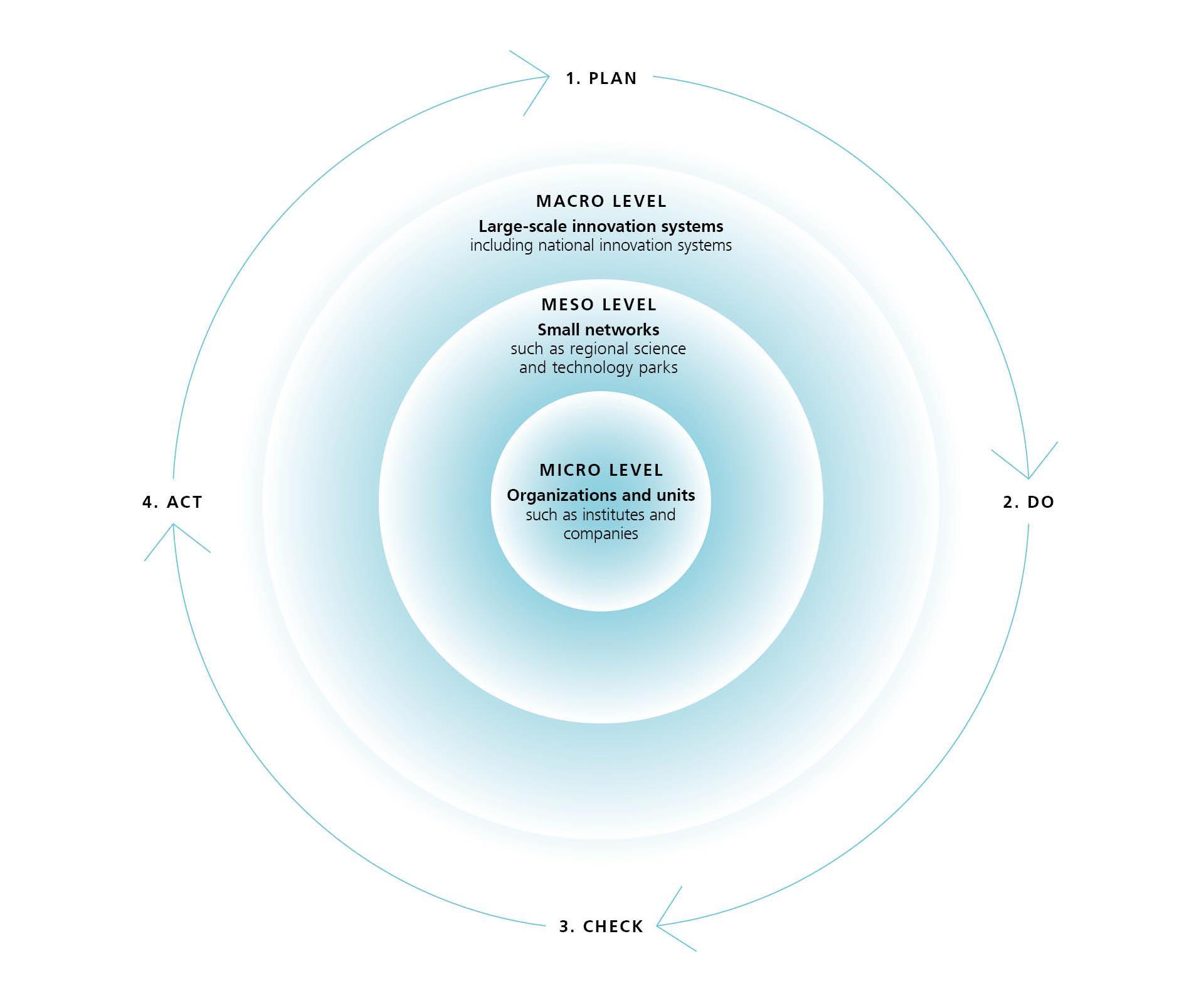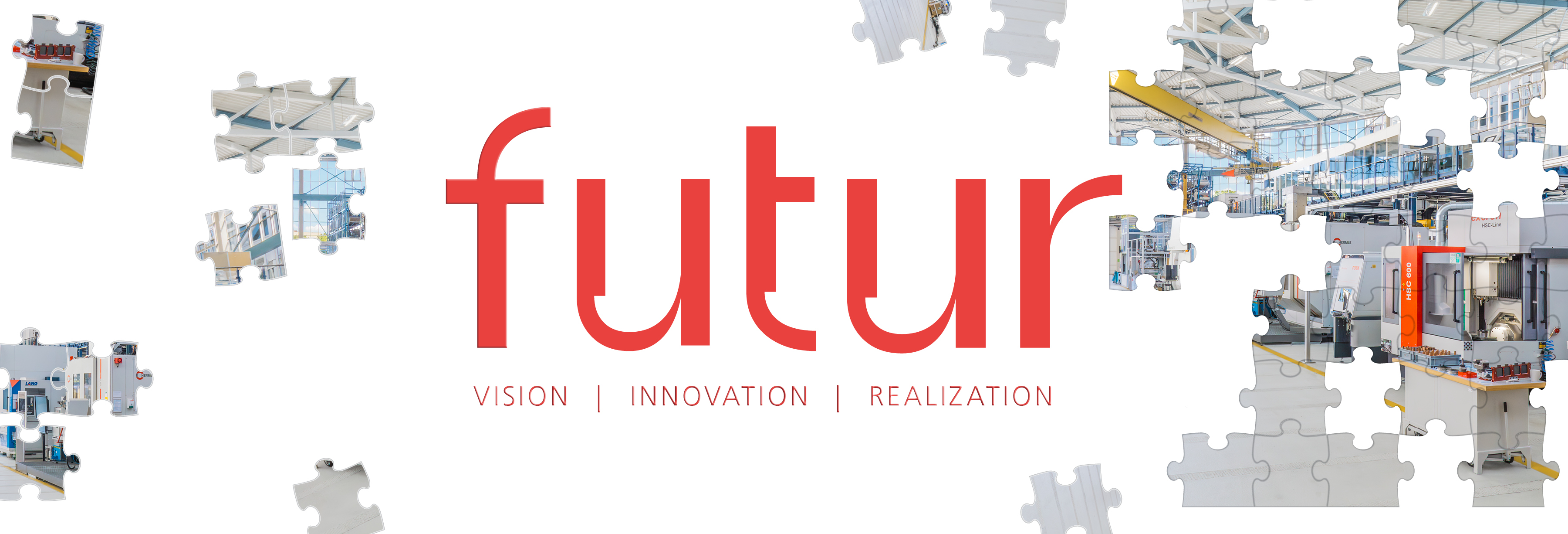Innovations on All Levels


Technological innovations are important drivers for national economies: Up to 85 percent of an economy’s growth can be attributed to them. Prerequisite for this are well-founded and implemented strategies, from the business processes of individual companies to the political guidelines of national innovation systems. The resounding success of innovations does not depend only on the performance of individual actors. Instead, it arises from the optimal interaction between companies, research and educational institutions, and politics. The structural, cultural and financial conditions in a region or country also play a major role. The foundations for successful innovation must therefore be created at different levels:
- The micro level consists of individual actors and smaller entities such as companies or research institutes.
- The meso level contains clusters such as regional science and technology parks.
- The macro level includes large-scale, i.e. trans-regional, national networks or even international players.
The three levels of innovation systems are not independent of each other. They can be better imagined as nested shells. This approach makes it clear that the solutions and actors at all three levels must be considered in an integrated way in order to create the best conditions for an innovation-friendly environment – whether the target system is a company, a technology park or a country. After all, even the best nationwide industrial policy is useless, if those who are supposed to implement the political guidelines are not well positioned to do so. Conversely, a particularly inventive start-up will never be able to reach its full potential, if it cannot access the infrastructure of a well-established research ecosystem.
Precisely this systemic integration is Fraunhofer IPK researchers’ wheelhouse. In the Competence Center Innovation Systems and Structures (CCIS), they are developing comprehensive system solutions that incorporate all three levels. They have plenty of experience in this, having supervised many projects on different scales. They support their partners along a well-established process.
This always begins with a comprehensive analysis of the current situation, both in the region or country and with the client itself. The aim is to fully understand the internal and external starting position. In the next step, the innovation system’s target state is drafted. Together with the client, the researchers develop a vision of the ideal innovation structure, whether at the micro, meso or macro level. This vision of the future encompasses all the necessary structures, partnerships and financial flows, as well as issues such as research topics and specific research services. The final step is implementation planning. This involves defining in detail how the transition from the current situation to the desired target structure should take place. The team plans strategic measures that the partner must follow in order to achieve the target state. These measures are put in a chronological order to create a concrete implementation roadmap.
This three-step approach ensures that all levels of innovation systems are considered in an integrated way – the best prerequisite for an innovation-friendly environment.
You might also be interested in:
- More articles on »System Integration«
- Competence Center Innovation Systems and Structures (innovationssysteme.fraunhofer.de)
 Fraunhofer Institute for Production Systems and Design Technology
Fraunhofer Institute for Production Systems and Design Technology